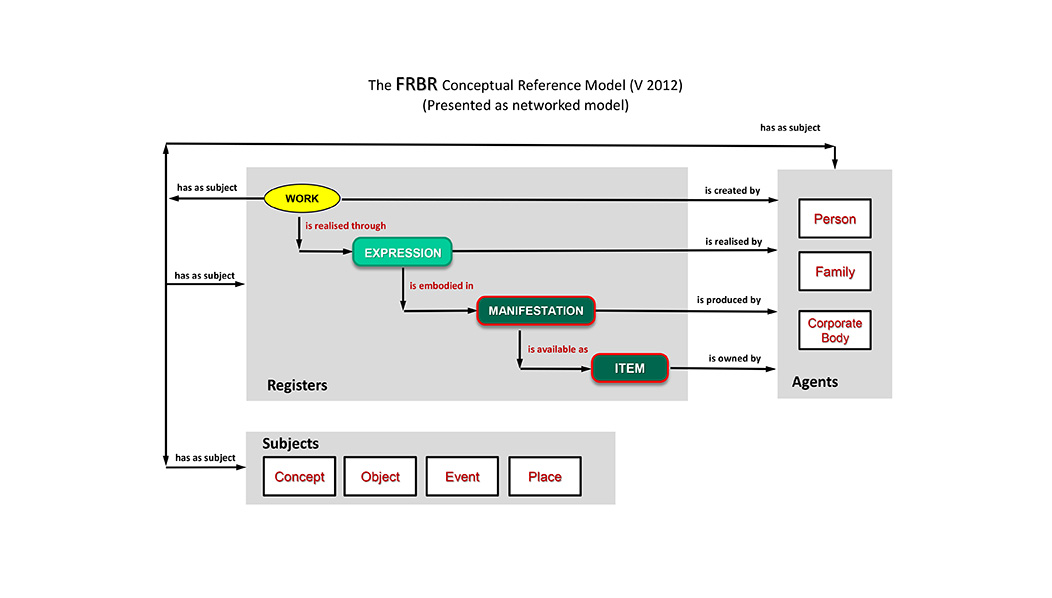FRBR is a conceptual modelling of the information contained in library bibliographic records developed by an IFLA expert group from 1991 to 1997, approved in 1997 by the IFLA Standing Committee on the Cataloguing Section and published in 1998.
Roughly, FRBR organizes the different components of the bibliographic description from a logical point of view (the authorities, the subject accesses and the information on the document itself) into three groups of entities connected by relations (entity-association model):

Figure5‑6: General FRBR schema
- The first group of entities includes everything about the documents and their different versions. These entities are: work, expression, manifestation, and item. The originality of the model is the notion of work, which can link such a novel and its translations or adaptations, a thing that catalogs are unable to do except with a rebound by title (if the title is the same ) or by author.
- The second group of entities is the modeling of individuals and organizations which have a responsibility for creating entities in the first group. It is introduced the concept of relationship (creation, production or membership) to mark the way people operate in relation to the work-expression-manifestation-item event phase that is important.
- The third group manages entities that are the subject of work: concept, object, event, location.
Comments:
The main criticism of the FRBR model is to be centered on the description of accomplished and published works that corresponds to the status of a library (the result, not the process of gestation leading to the materialization of the work). In practice, however, this is an important step towards a library modeling concepts similar to those of the "Semantic Web." The entities of group 1, provide a model to multiple publication and description of versions, the entities of group 3 evoke ontologies describing for example the relationship between event and location.
The limitations of this approach are well known, the model is made in the conceptual sense, but to become “semantic” there must be a clear distinction between what is about the process and the result of the representation process (works).
The IFLA and CIDOC developments:
Between 2015 and 2017, the FRBR conceptual model was gradually replaced by the integrated IFLA-LRM model, which harmonises and consolidates the three models developed separately by IFLA: FRBR for bibliographic data, FRAD for authority data and Functional Requirements for Subject Authority Data (FRSAD) for material authority data.
